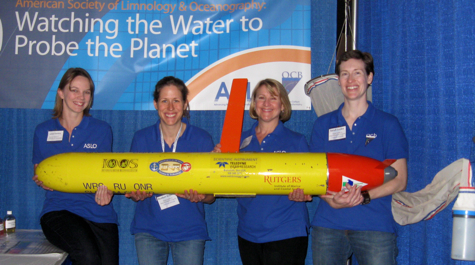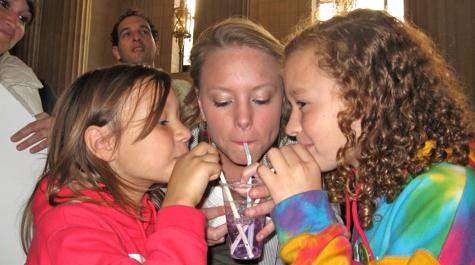VIMS professor takes part in USA Science & Engineering Festival
Professor Deborah Bronk of the Virginia Institute of Marine Science participated in last weekend’s inaugural USA Science & Engineering Festival on the National Mall in Washington, D.C.
The Washington Post reported that more than one million people attended the two-day event, a grassroots affair hosted by Lockheed Martin and supported by monetary and in-kind contributions from more than 800 research institutions, museums, high-tech companies, and community organizations from across the nation.
President Obama kicked off the festival with a White House science fair that recognized the young winners of the nation’s top science and engineering competitions.
Bronk, an internationally recognized expert on nitrogen cycling in aquatic systems, participated in the festival as President of the American Society of Limnology and Oceanography (ASLO) and as a member of the Scientific Steering Committee for the National Science Foundation’s Ocean Carbon and Biogeochemistry Initiative (OCB). ASLO, with more than 3,800 members in 58 countries, is the leading professional organization for researchers and educators in the field of aquatic science.
The 2-day event featured more than 1,500 hands-on exhibits, plus 4 main stages with presentations by science celebrities, magicians, jugglers, bands, and more. Bronk helped staff the ASLO/OCB booth, “Watching the Water to Probe the Planet,” which gave festival visitors a chance to meet aquatic scientists and learn how they study the world's marine and freshwater habitats.
“It was a really great event,” says Bronk. “Exhausting but wonderful.”
Highlights of the ASLO booth included a hands-on activity that allowed visitors to better understand ocean acidification and the threat it poses to marine ecosystems. On a global basis, ocean acidification is caused by increasing levels of carbon dioxide in the Earth’s atmosphere and ocean, and a consequent decrease in the ocean’s pH that threatens coral reefs, shellfish, and other marine creatures that make their skeletons from calcium carbonate. In the booth, visitors raised the acidity of a cup of water by exhaling carbon dioxide into the water through a straw.
Another highlight was display of an undersea “glider,” an unmanned research vehicle that moves through the water without a motor or batteries by taking advantage of differences in water density. The glider was on loan from Dr. Oscar Scofield at Rutgers University.
Bronk says her only concern while staffing the booth was the number of people who stopped by to ask “What’s limnology?” She then poses her own question: “How can little kids dream of growing up to be limnologists if they've never even heard of it?” (Limnology, from the Greek limne (lake) and logos (knowledge) is the study of inland waters.)
“We need to fix that somehow,” Bronk says. “We need a media blitz on this. We need to get limnology into the New York Times crossword puzzle, Wheel of Fortune, Are you smarter than a 5th grader?, the Reader's Digest's Word Power Challenge—wherever we can!”




